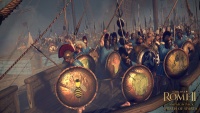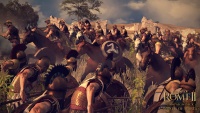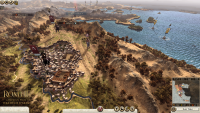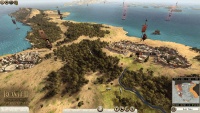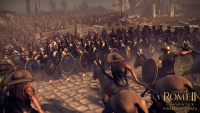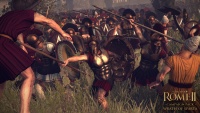Wrath Of Sparta Campaign Pack
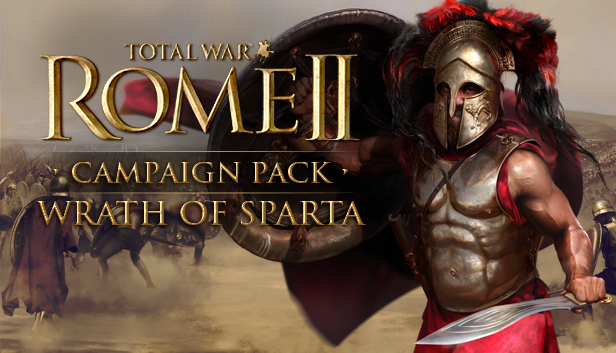
Contents |
Wrath Of Sparta - What is it?
Set in 432 BC at the outset of the Peloponnesian War, Wrath of Sparta is an entirely new campaign expansion for Total War: ROME II, will be released on the 16th December, and is the earliest period that Total War has ever attempted.
As the legendary warriors of Sparta are called into open conflict against an arrogant Athens by scheming Korinthos and Boiotia, Wrath of Sparta challenges you to dominate the Hellenic world. However, while the City States vie for control of their homelands, across the Aegean sea the vengeful Persian Empire watches its old foe closely…
Across a bespoke campaign map focussing on a highly-detailed ancient Greece, the Greek Islands and the Ionian Coast, this campaign pack features all new tech-trees, battlefield and naval units, great wonders and famous Greek heroes. In addition, a flavour-packed focus on ancient Greek culture is delivered through many iconic athletic competitions and festivals.
Wrath of Sparta is a campaign pack like no other, bringing this desperate conflict to life in thrilling detail across hundreds of hours of gameplay.
For more information, catch the latest episode of community show Rally Point or the store page here.
New Campaign Map
The earliest period any Total War game has depicted, Wrath of Sparta’s campaign map is a vivid and detailed representation of the Greek world in 432 BC; featuring 22 provinces across 78 regions, covering the Greek mainland, islands and the Ionian coast. The map brings 12 new Wonders to light, including the Ruins of Troy, the Temple of Zeus and the Royal Tombs of Makedon. Furthermore, as the campaign features a tighter timeframe than the ROME II Grand Campaign, each turn represents one month.
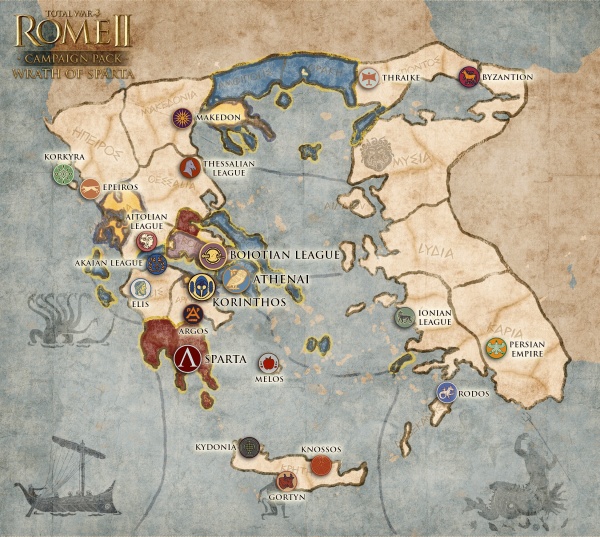
Four Playable Factions
Athens (Athenai), Corinth (Korinthos), Sparta and Boiotia are all playable in Wrath of Sparta, each bringing its own faction traits, unit rosters, challenges and geographical starting point. In addition, famous generals and statesmen of history appear throughout the campaign, such as the Spartan general Lysander and the Athenian dignitary Sokrates.
In homage to their historical strengths, Sparta can field a greater variety of troops than other factions to reflect its mastery in land warfare, while Athens has the roster advantage in naval warfare.

|
’’Athenian aid to the Greek cities of Asia Minor has prompted imperialist Persia to invade mainland Greece twice.’’ Read more… |
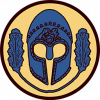
|
’’Unified under an oligarchical system of government, Korinthos has become rich from trade due to its geographical position.’’ Read more… |

|
’’An entirely militarised culture, the Spartans are truly a force to be reckoned with.’’ Read more… |

|
’’Occupying a position of strategic importance on the Gulf of Korinthos, Boiotia has strong frontiers and trade connections across the region.’’ Read more… |
Panhellenic Games and Festivals
The Greeks of the age were keen athletes, and the annual competitions of the Olympic, Pythian, Sithmian and Nemean games are represented. When each is held throughout the yearly calendar, you’ll have a number of choices to make. Do you sponsor an athlete, back a competitor, send an envoy or do nothing? Each choice can bring you favour or misfortune. Likewise, the Greek calendar was packed with religious festivals, which bring their own campaign bonuses and benefits, and bring the flavour of the age to life.
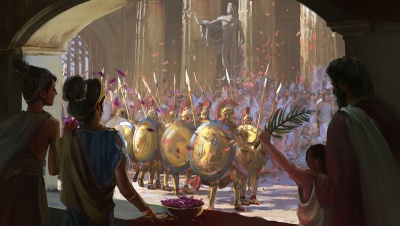
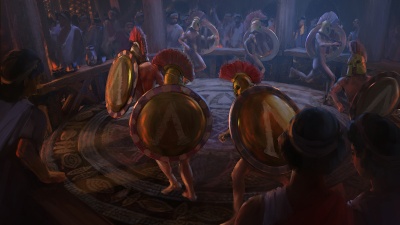
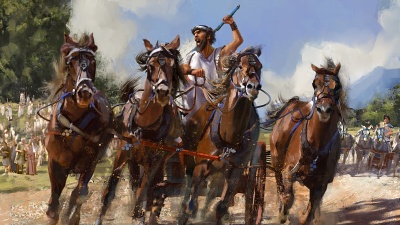
New Tech Trees
Wrath of Sparta features all-new tech trees, reflecting the military, naval and civic developments of the time. The six branches enable the player to advance in the fields of military, naval and support technologies, philosophy, aesthetics and mathematics.
Hellenic Tribalism
With the exception of the Persian Empire, the factions represented in Wrath of Sparta are Culturally Hellenic, so ‘Culture’ has been replaced with ‘Tribalism’. Each faction belongs to one of the Greek tribes, and while the four playable factions won’t suffer from public unrest due to the presence of other Greek tribes, they will suffer major diplomatic penalties with factions that were not ‘true’ Greeks.
The Persian Threat
The Empire of Persia sits at the eastern end of the campaign map and remains largely uninvolved with Greek affairs. However, if one Greek state rises to dominate all others, the Persians will escalate their military involvement over time, in a growing effort to bring that power to heel!
New unit rosters are available to all four playable factions, representing warfare of this period in Greek history. The Greek factions feature a heavy emphasis on hoplites, with supporting elements to react to different combat scenarios and bring tactical variety. There are fewer but more specialised units of mercenaries available to swiftly bolster and bring greater flexibility to armies, and these are more widely available across the provinces.
The backbone of Greek naval assets is composed of tactical variations on the Dieres and Trieres hull types, with a greater focus on ramming and boarding. In addition, troop transports act more as cargo ships than combat vessels, and are no longer able to ram in naval battles, reducing the unfair advantage of troop convoys in naval warfare. This change will be retroactively applied to all ROME II campaigns.
Amongst over 50 new Naval and Land units for Wrath of Sparta, you will also encounter specialist and legendary troops, such as the Immortal Spearmen, Spartan Hoplites and Skiritai.
Elite Units
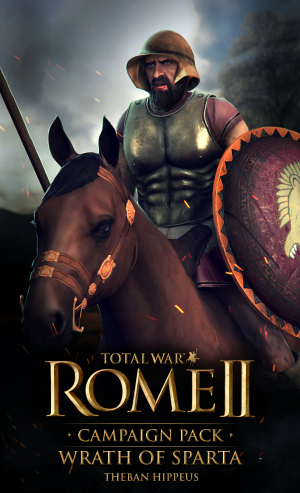
These were the words of the Athenian general Hippocrates to his men before the Battle of Dileum against the Boiotian League. Led by the Thebans, The league was a confederation of city states on the Greek mainland north of Attica.
Ironically it was the very cavalry that Hippocrates wanted to crush which brought about his defeat, in what was to be his last battle. The Theban General Pagondas had deployed his troops in an asymmetric line with heavy emphasis on his right flank where the Thebans faced off the Athenian forces. Pagondas’ hoplites were formed 25 rows deep as opposed to the usual eight. However, despite the advantage in numbers, the disciplined Athenian front line was holding.
Meanwhile on Pagondas’ weaker left flank, the rest of the Boiotian allies were outmatched. But as the battle teetered on a knife-edge, the Theban general played his ace. He sent part of his cavalry around the hill behind the Boiotian army to support his left flank. When they seemingly appeared from nowhere and charged downhill to strike the enemy, the Athenian right was shocked into disarray and swiftly routed.
The Theban Hippeis had effectively won the battle. Unsurprisingly, it was Thebes which produced one of the first great Greek cavalry commanders in Pelopidas a few decades later, whose expertise inspired Phillip II and Alexander the Great himself.
In the aftermath of the Graeco-Persian War at the beginning of the 5th century BC, Athens managed to further consolidate its role as a regional power and usher in the era of the Athenian Empire. A main pillar of their power was their naval supremacy which had played such a vital role for the Greek efforts against the Persian forces in the epic Battle of Salamis.
The pinnacle of naval engineering at the time, the Trires were the backbone of the Athenian Navy. These fast and highly manoeuvrable galleys were propelled by three rows of oars on each side of the ship, typically manned by Athenian citizens. The Athenians were experts at outmanoeuvring enemy ships so as to ram their sides or more vulnerable rears and used various tactics to attack their foes or defend against them.
While ramming in an effort to sink ships was the preferred course of action, the oarsmen had to rely on the deck crew to defend them in case they were boarded. Disciplined armoured Marines may have slowed the ship down due the added weight, but they were a formidable defence against enemy marauders, and sometimes a last hope for survival.
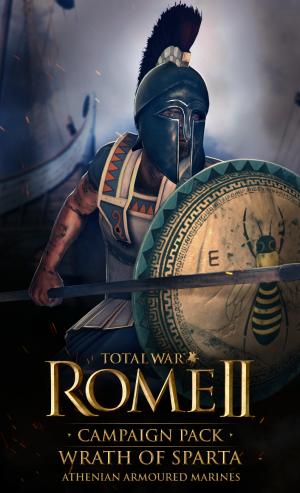
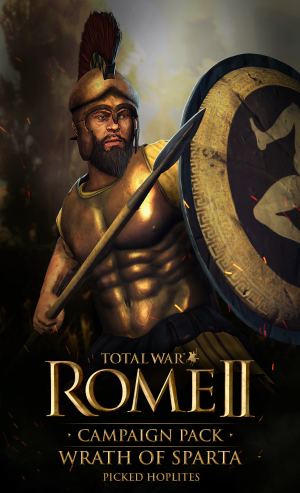
The Greek answer to the increasing scale and organisation of warfare throughout the 1st millenium BC was the Hoplite. Citizen warriors, they were trained at the expense of the state, though like the Republican Romans, hoplites provided and cared for their own weapons and armour. Good armour and weapons were expensive, so the majority of hoplites were drawn from the middle classes of Greek society.
While styles changed over time and richer citizens had access to more decorative and protective brass armour pieces, the typical hoplite was clad in in linothorax and helmet, and carried a spear in his right hand and a hoplon shield in his left. This offered him and the man to his left protection, creating a defensive wall in the closed ranks of the phalanx. Hoplites also carried a short sword, which might be adopted in the crush of extended melee.
The finest veteran hoplites were chosen from the ranks and formed units of their own, to be deployed where they might swing the tide of battle. To be a Picked Hoplite was a great honour that came with a great responsibility: to succeed in battle where others would fail.
When the Persian King of Kings Xerxes I invaded Greece, it was the Spartan King Leonides and 300 of his royal guard who led the Greek defenders against an army that vastly outnumbered them. The Greeks held off the Persian advance for three days in the pass of Thermopylae in 480 BC. On the last day the Spartans remained alongside their Theban and Thespian brothers in arms while the rest of the Greek army retreated. They fought to the last man but were ultimately overwhelmed. Yet soon after, Xerxes lost a vast portion of his navy in the battle of Salamis, and was forced to return home. The military significance of Thermopylae is debateable, but the moral effect to the Greek effort cannot be underestimated.
The Spartans weren’t famous for their sacrifice at Thermopylae alone. They were known as fierce warriors across and beyond Hellas, and the Spartan Army was arguably the toughest and most disciplined any Greek Polis could muster at the time. At age seven, a Spartan would enter the agōgē, a mandatory education and training regimen. A large part of his education was comprised of physical and military exercise and any male who wasn't able to successfully pass through the agōgē was denied citizenship.
Thus the Spartans insured that their Hoplite Phalanx was comprised of exceptional warriors, the very best of which were the Royal Spartans.
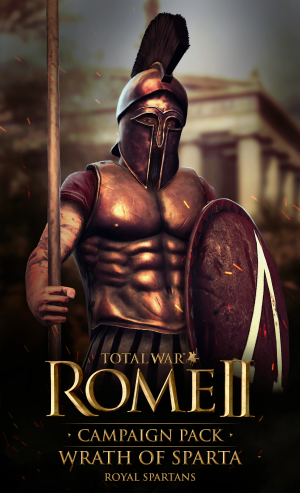
System Requirements
Minimum
- OS: XP/ Vista / Windows 7 / Windows 8
- Processor: 2 GHz Intel Dual Core processor / 2.6 GHz Intel Single Core processor
- Memory: 2GB RAM
- Graphics: 512 MB DirectX 9.0c compatible card (shader model 3, vertex texture fetch support).
- DirectX®: 9.0c
- Hard Drive: 35 GB HD space
- Additional: Screen Resolution - 1024x768
Recommended
- OS: Windows 7 / Windows 8
- Processor: 2nd Generation Intel Core i5 processor (or greater)
- Memory: 4GB RAM
- Graphics: 1024 MB DirectX 11 compatible graphics card.
- DirectX®: 11
- Hard Drive: 35 GB HD space
- Additional: Screen Resolution - 1920x1080
